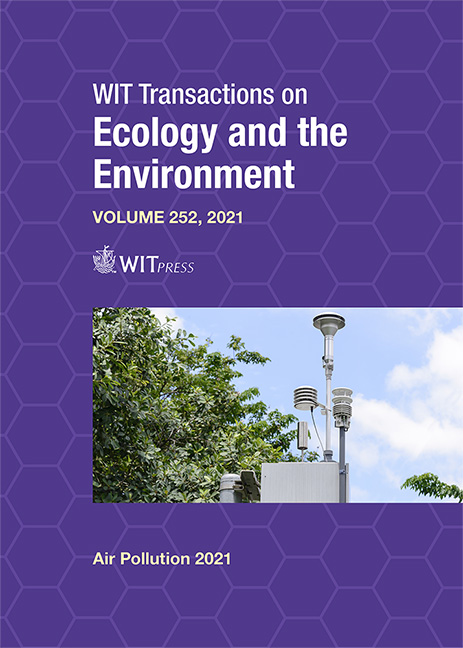MODEL-BASED ESTIMATION AND PREDICTION OF ATMOSPHERIC POLLUTANTS IN THE ENVIRONMENT
Price
Free (open access)
Transaction
Volume
252
Pages
12
Page Range
15 - 26
Published
2021
Paper DOI
10.2495/AIR210021
Copyright
Author(s)
UROOSA TAGAR, RANJAN VEPA
Abstract
Air pollution in urban areas is mainly due to the intense use of motorized transport for travelling. To monitor the change in the concentration of pollutants in the atmosphere on a real time basis, we may use any control-theory engendered filter such as a Kalman filter, an extended Kalman filter, an unscented Kalman filter or a particle filter, which are statistically based methods that rely on some form of dynamic model of the changes in the concentration, and are therefore suitable for monitoring concentrations of carbon monoxide (CO), carbon dioxide (CO2), nitric oxide (NO), unburnt hydrocarbons, nitrogen dioxide (NO2) and other pollutants from cars and jet engines. In this study air quality monitoring data for the years 2013 to 2017 (5 years) was obtained from the website of Department for Environment, Food and Rural Affairs (DEFRA), UK. A formal statistical model that can be used to predict the dynamics of pollutants in the atmosphere or any other similar pollutant is not available and it is really necessary that such a model is developed based on the observed data. A simple second order model of this data was established using MATLAB software. After that the concentrations of NO, NO2, ozone and particulate matter (PM10) in the atmosphere at a particular location within London city, were estimated using certain techniques namely, Least-squares estimation technique, Theil–Sen regression technique and an auto-regressive predictive filter technique also known as the linear predictive coding (LPC) estimator. Based on the second order model, a Kalman filter technique was implemented to predict the concentration of the pollutants. Results obtained from these techniques were compared with each other and generally indicate a steady decline of the pollutant concentrations while the Kalman filter and LPC estimator predict a periodic reduction in the concentration of the same pollutants over the 5 year period.
Keywords
air pollution, concentration estimation, prediction, nitric oxide, nitrogen dioxide, particulate matter, ozone





